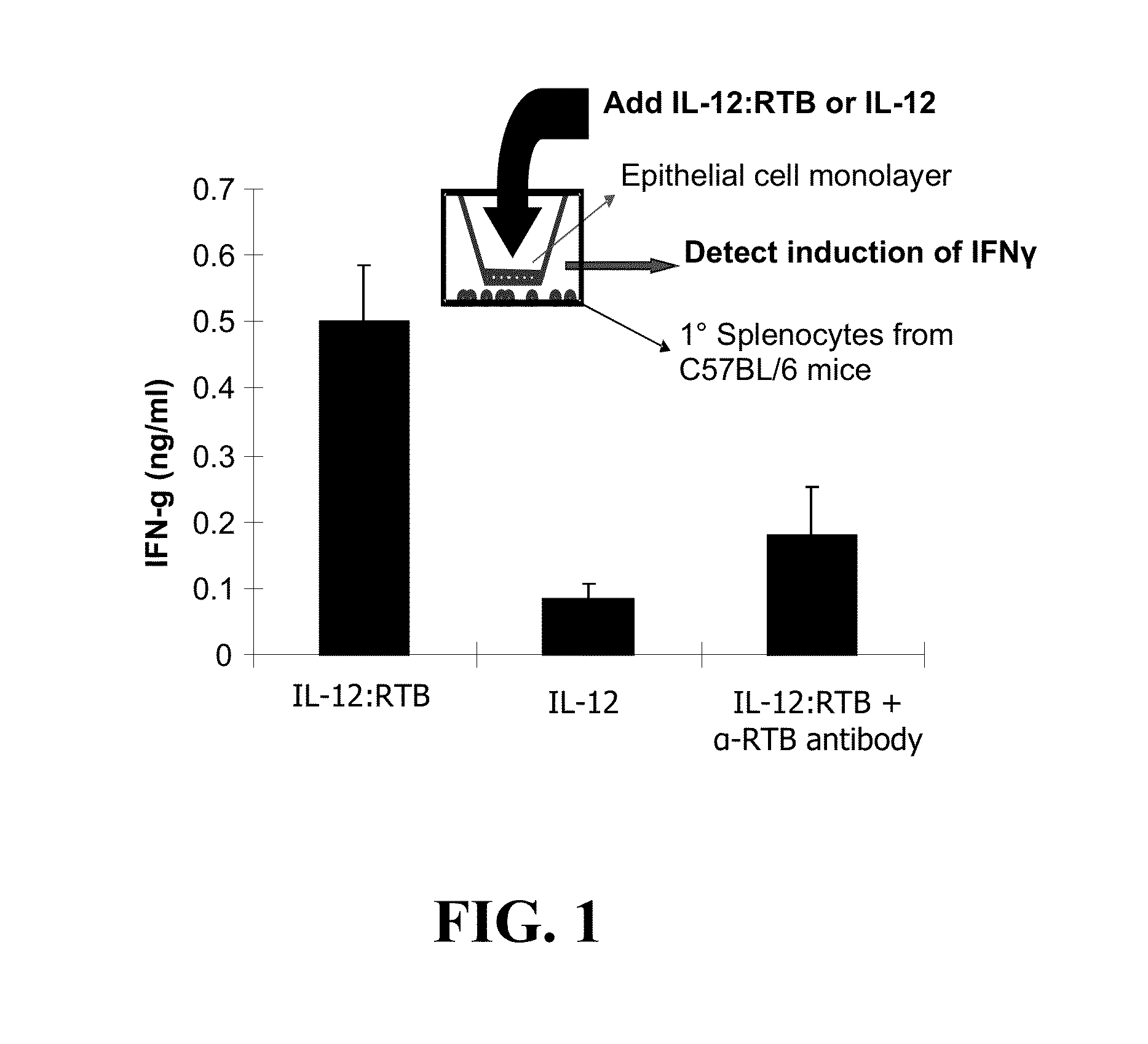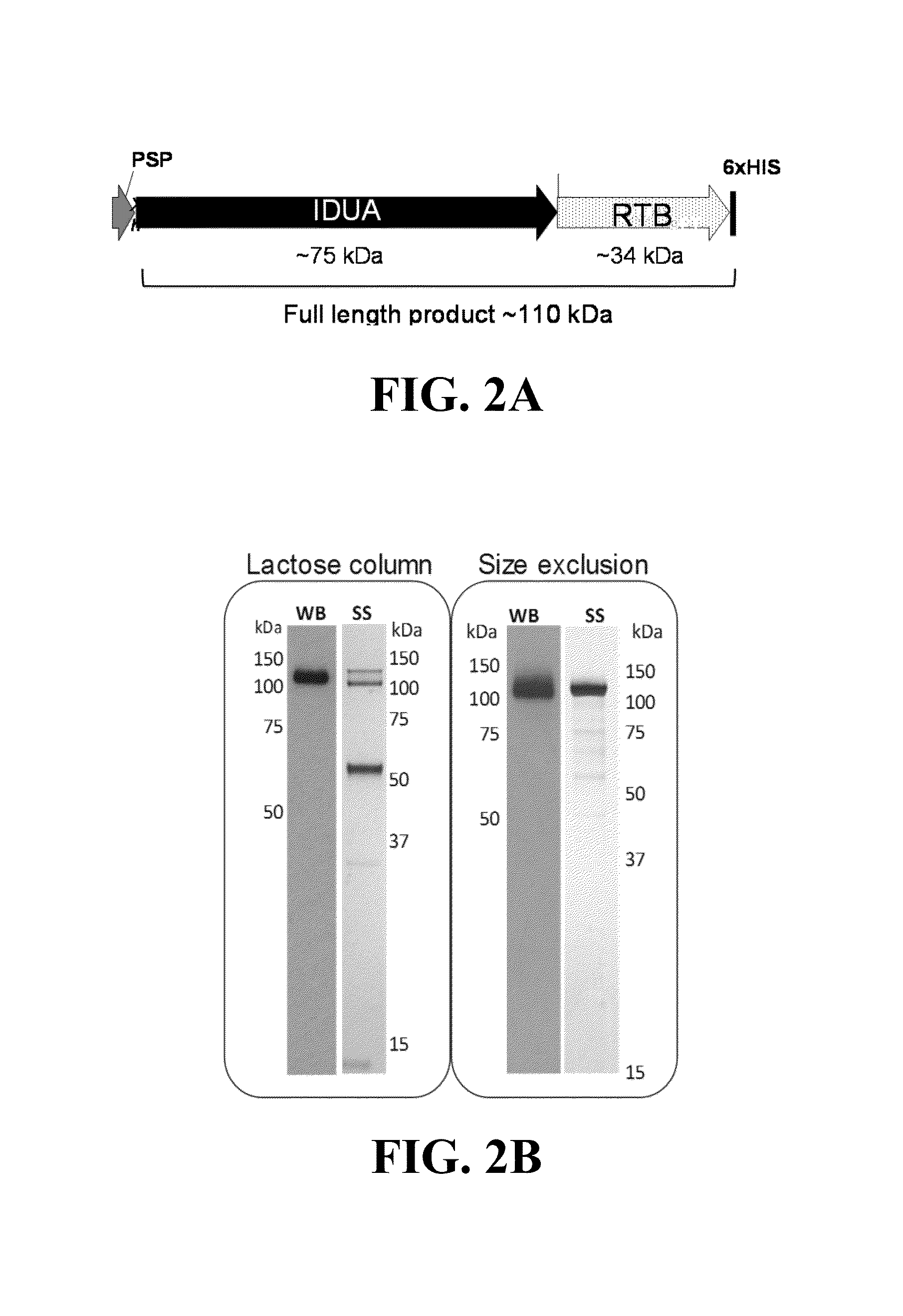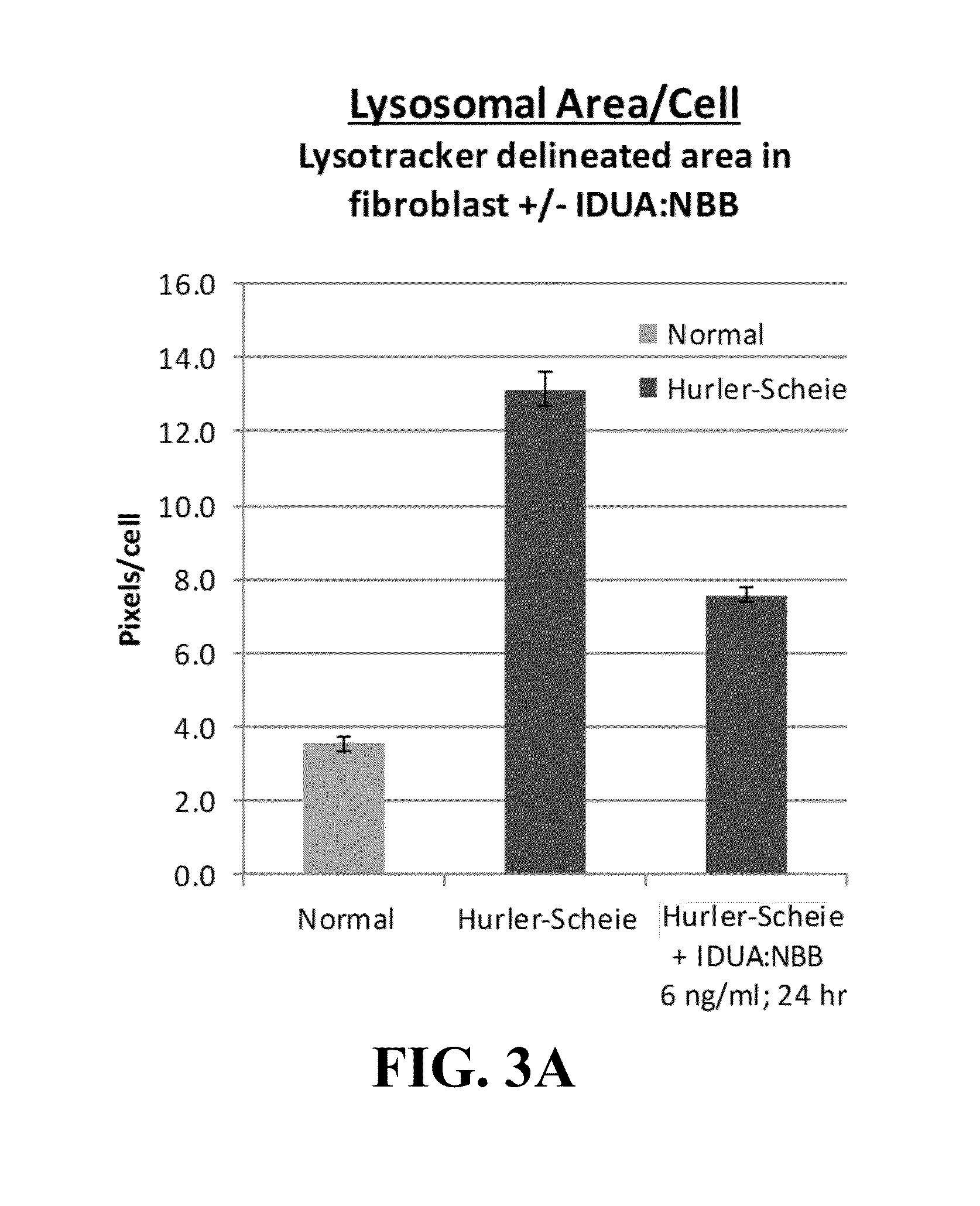Plant lectins as carriers of associated drug substances into animal and human cells
- Summary
- Abstract
- Description
- Claims
- Application Information
AI Technical Summary
Benefits of technology
Problems solved by technology
Method used
Image
Examples
example 1
PTB-Lectins can Carry and Deliver Fused Payloads (Genetically Fused Proteins or Conjugated Small Molecules) into Mammalian Epithelial Cells
[0072](e.g., HT29 human gut epithelial cells, HeLa cells, A549 lung epithelial cells). Genetic fusions of RTB (the lectin subunit B of ricin) or NBB (the lectin B subunit of nigrin B) with Green Fluorescent Protein or Red Fluorescent Protein (DsRed) were produced and purified. The lectin:fluorescent fusion proteins were then incubated with cultured cells at 0-4° C. to allow binding to the cell surface. Cells were then washed and incubated at 37° C. to initiate uptake into the cultured mammalian cells. The fluorescently tagged RTB and NBB was observed to bind to the cell surface at time zero and to move to internal punctuate structures by 30 to 60 minutes indicative of endosomal / lysosomal compartments. In contrast, incubation of cells with Green Fluorescent Protein or Red Fluorescent Protein that lacked the PTB-lectin did not bind to cells or tran...
example 2
PTB-Lectin Carries Fused Proteins Across Confluent Cell Layers Demonstrating Transcytosis
[0073](FIG. 1). In other studies, we produced RTB fusions with the mouse cytokine interleukin-12 (IL-12). IL-12 triggers induction of interferon-γ (IFN-γ) in splenocytes but not epithelial cells. To demonstrate transcytosis, a confluent monolayer of HT29 cells was developed and placed as an insert over primary mouse splenocytes. IL-12:RTB, but not IL-12 alone, triggered IFN-g induction. Addition of anti-RTB neutralizing antibody blocked this induction (Liu, Dolan, Cramer, unpublished data).
example 3
[0074]Plant-Based Production of Recombinant PTB-Lectin—Human Lysosomal Fusion Proteins Yields Proteins that Simultaneously Display Selective Lectin Binding Activity and Lysosomal Enzyme Activity
[0075]In order to demonstrate that PTB-lectins successfully deliver lysosomal ERT (enzyme replacement therapy) enzymes to the cells and organelles that are critical targets for ameliorating symptoms of lysosomal diseases, we utilized several model ERTs including human α-L-iduronidase (IDUA) and the human sulfaminidase, N-sulfoglucosamine sulfohydrolase (SGSH). Gene constructs were developed that fused the coding region of the plant lectins RTB or NBB to the coding regions of the human lysosomal enzymes. Typically, the fusion partners were tested in both orientations (e.g., NBB:IDUA and IDUA:NBB). The genes encoded a plant signal peptide (the signal peptide from the potato patatin gene) to ensure that the recombinant product was targeted to the endoplasmic reticulum for addition of N-linked gl...
PUM
 Login to View More
Login to View More Abstract
Description
Claims
Application Information
 Login to View More
Login to View More - R&D
- Intellectual Property
- Life Sciences
- Materials
- Tech Scout
- Unparalleled Data Quality
- Higher Quality Content
- 60% Fewer Hallucinations
Browse by: Latest US Patents, China's latest patents, Technical Efficacy Thesaurus, Application Domain, Technology Topic, Popular Technical Reports.
© 2025 PatSnap. All rights reserved.Legal|Privacy policy|Modern Slavery Act Transparency Statement|Sitemap|About US| Contact US: help@patsnap.com



